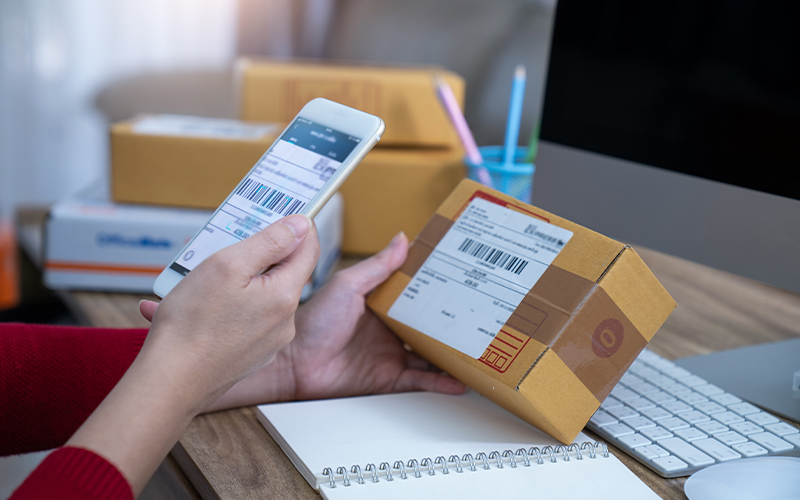Fraud Retail
Credit Card Fraud Protection: Guide to Securing Your Financial Information
In today's digital economy, credit cards offer unparalleled convenience, but this also brings a growing risk of fraud. As fraudsters develop more sophisticated techniques, the need for robust credit card fraud protection has never been more critical. Taking proactive steps to secure your financial data is the best defence against identity theft and unauthorized charges.
This guide will walk you through the most common threats and provide ten actionable steps on how to protect yourself from credit card fraud.
Key Takeaways for Quick Protection:
- Monitor Statements: Regularly check your transaction history for any suspicious activity.
- Enable Alerts: Set up real-time transaction notifications with your bank.
- Use Strong Passwords & 2FA: Secure your online accounts with unique passwords and two-factor authentication.
- Beware of Scams: Learn to recognize phishing emails and smishing (SMS) attempts.
Why Proactive Fraud Protection is Essential
Despite low or zero-liabilities on a credit card, a fraud or an identity theft can severely impact your credit score and financial stability. Fraud can cause unwanted trouble for the customers and the bank. The bank’s zero-liability policy saves credit card users from bearing the financial brunt, provided they report the fraud within 60 days. However, they have to go through the ordeal of discovering the theft, reporting it to the bank, particularly when it involves stolen credit cards. getting a replacement card, paying the fee, and resetting all auto pay accounts.
Recent statistics reveal that in 2021, worldwide losses on credit card fraud amounted to $32.04 billion, and the number is likely to grow, reaching $38.5 billion by 2027. Given that it is such a massive breach of privacy and finances, the whole experience leaves a user emotionally perturbed, with a loss of confidence in the bank’s services.Such instances call for strong preventive measures rather than reactive damage control. It is here that the awareness among credit card users will help the bank nip the problem in the bud.
First, Understand the Threats: Common Types of Credit card Fraud
To effectively prevent credit card fraud, you must first understand the enemy. Here are the most common ways criminals try to steal your information:
- Skimming: Fraudsters attach a small device to a real card reader—like at an ATM or gas pump—to secretly steal your card data and PIN when you swipe or insert it.
- Phishing and Vishing: These are scams where criminals impersonate your bank or a trusted company via email (phishing) or phone calls (vishing) to trick you into revealing your card number, CVV, or passwords.
- Data Breaches & Online Threats: Hackers target large companies to steal customer data. Your information can then be sold online and used by criminals to make fraudulent "Card-Not-Present" transactions.
- Card-Not-Present (CNP) Fraud: This occurs when a thief uses your stolen card number, expiration date, and CVV to make purchases online or over the phone, without needing the physical card.
Actionable Steps to prevent credit card fraud?
The users often have a common question: How to avoid stolen credit card transactions or credit card frauds? The answer lies in these simple credit card usage etiquettes.
Keep the login details secure:
Never share your credit card PINs, mobile application passwords, or internet banking passwords with anyone, be it a friend or a family member, or over an email.Never pay upfront:
Online scams send random emails requesting credit card users to pay taxes or fees to collect a large sum of prize money, inheritance, or overseas investment. Never pay for such schemes upfront as these are online scams. You may lose not only the money but also credit card details to further fraud.Take your time before making a payment and monitor your credit:
Many advertisements ask the users to ‘pay now’ to avail a discount. Never let such deals pressure you into making a payment before you consider the pros and cons of the product or the service as well as the legitimacy of the website.Beware of phishing and viruses:
Phishing is similar to throwing a bait to catch a fish. But rather than underwater, it happens in the payments domain. Fraudsters trick customers into revealing credit card numbers, expiry dates, and CVV numbers over emails, phone calls, text messages, and snail mails. They use familiar logos, email templates, and even web pages that look similar to the actual ones. Users must know that financial institutions will never ask you for such information over phone, email, text, or snail mail.Identify skimming:
Skimming happens when a thief steals a customer’s credit card details during a legitimate transaction at a PoS device and uses that information to design a counterfeit card. Using this card, the thief can make online purchases where a physical card is unnecessary. Never let your card out of sight while handing it over to the operator at restaurants or at fuel stations. EVM chip cards help alleviate the skimming problem, but customers should immediately alert the staff if they see anything unusual in the card slot or the PoS device.Use different cards for autopay and everyday spending:
Keep a separate card reserved for autopay subscriptions on websites, telephone bills, or electricity bills. You can save this card from being processed by multiple hands at restaurants, retail stores, or fuel stations. This doesn’t prevent fraud but avoids late payment charges in case of card theft until you get a new card.Pay from mobile wallets:
Mobile wallets make payments at stores safe because they use tokenisation technology. They save only the required amount of money in the wallet that you need for the transaction. This way, the merchant can never collect credit card details. The phone usually has a fingerprint, a swipe, or a password-based authentication system. This prevents anyone from using the phone to make payments.Set a payment limit:
All credit card providers have a facility to set payment limits for ATM withdrawals, PoS transactions, online/e-commerce payments, and contactless payments. By default, the limit is set to the maximum amount available on the card. It is best to change these settings to the minimum amount you need in day-to-day transactions. You can change the limit from the mobile application anytime.Be Cautious on Public Wi-Fi Networks
Public Wi-Fi networks in places like cafes or airports are often unsecured. Avoid accessing your online banking or making purchases when connected to them. If you must, use a Virtual Private Network (VPN) to encrypt your connection and protect your data from criminals on the same network.Leverage Secure Technology like Mobile Wallets
Services like Apple Pay, Google Pay, and Samsung Pay use a technology called tokenization. Instead of sending your actual card number during a transaction, they send a unique, one-time code. This means the merchant never sees or stores your real card details, drastically reducing the risk if they experience a data breach.
What Should I Do If I Suspect Fraud?
If you notice a suspicious charge or believe your card information has been compromised, follow these steps immediately:
- Contact Your Credit Card Issuer: Use the phone number on the back of your card to call your bank right away. They will likely freeze your account and issue a new card.
- Report the Fraud: File a report with your local police department. You can also report identity theft to the Federal Trade Commission (FTC).
- Place a Fraud Alert: Contact one of the three major credit bureaus (Experian, Equifax, TransUnion) to place a free, one-year fraud alert on your credit report. This makes it harder for someone to open new accounts in your name.
For Businesses: A Proactive Approach to Fraud Prevention
While these tips are essential for individuals, businesses face even greater risks from organized fraud. Protecting customer payment data and preventing fraudulent transactions is crucial for maintaining trust and avoiding significant financial losses. This requires a multi-layered security strategy that goes beyond basic precautions.
Infosys BPM provides end-to-end fraud and risk management solutions designed to help enterprises detect and prevent fraud in real-time, safeguarding revenue and enhancing customer trust.
To learn more about our advanced fraud prevention solutions, contact our experts today.
How can Infosys BPM help in credit card fraud protection?
Banks can work hand-in-hand with credit card users to safeguard their interests by having AI-based and future-ready technology to prevent stolen credit incidents. Credit card fraud protection technologies also help banks increase overall profitability and elevate the user’s trust in the product by securing credit card accounts:
View the retail and e-commerce fraud management solutions in detail.
Frequently Asked Questions (FAQ)
How can I tell if a website is secure?
A: Look for "https://'' at the beginning of the URL and a padlock icon in your browser's address bar. This confirms the website encrypts your data.
Does credit monitoring prevent fraud?
A: Credit monitoring doesn't prevent fraud, but it alerts you to new activity on your credit report, such as a new account opened in your name. This allows you to react quickly to limit the damage from identity theft.
Will I be responsible for fraudulent charges on my credit card?
A: In the U.S., federal law limits your liability for unauthorized credit card charges to $50. However, most major credit card issuers have a $0 liability policy, meaning you won’t have to pay anything for fraudulent transactions as long as you report them promptly.







